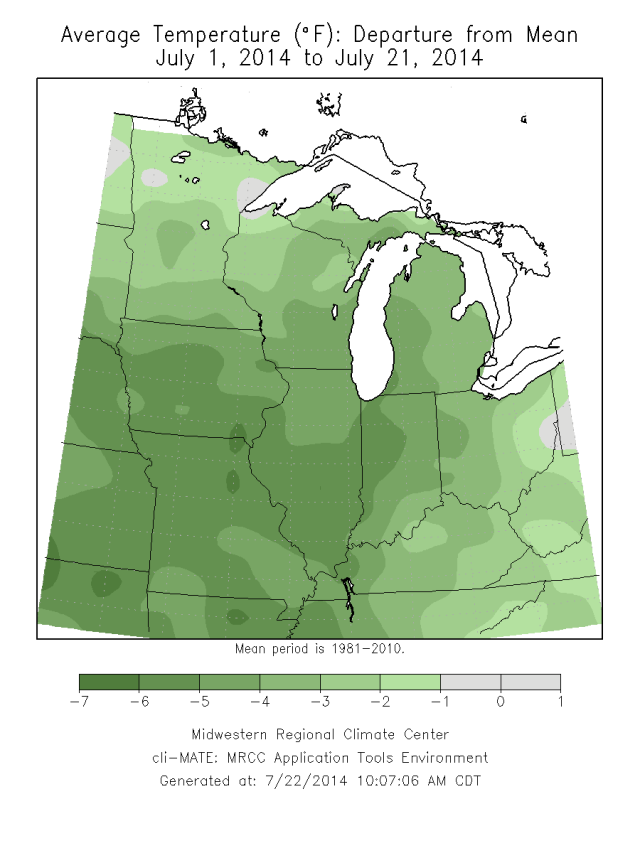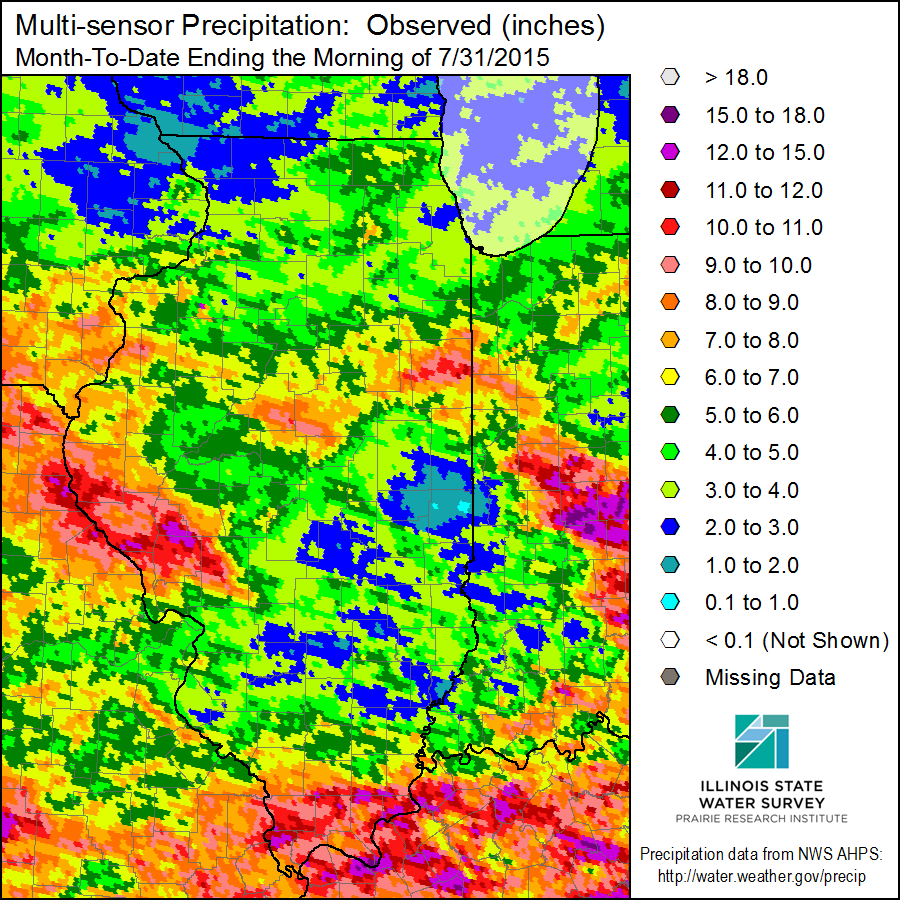Despite the recent short-lived warm spell that ends today, Illinois is on track to be one of the coolest July’s on record. The statewide average temperature from July 1-21, 2014, was 70.4 degrees. That is just 0.1 degrees off from the coolest July on record – set in 2009 with a temperature of 70.3 degrees. Of course we are only two-thirds of the way through the month but the NWS forecast for the rest of July is interesting (shown below).
- July 2009: 70.3 degrees
- July 2014: 70.4 degrees (as of July 22)
- July 1924: 71.1 degrees
- July 1967: 71.7 degrees
- July 1971: 71.9 degrees
- July 1950: 72.0 degrees
- July 1915: 72.2 degrees
- July 1947: 72.3 degrees
- July 1904: 72.4 degrees
- July 1905: 72.5 degrees
As this map shows, the cooler-than-average temperatures are not confined to Illinois, but is spread across the Midwest (shades of green show the degree of cooling compared to the 1981-2010 average).

With nine more days to go, the NWS forecasts indicate that temperatures are likely to be below average for the rest of the month. Here are snap shots of the NWS 6-10 and 8-14 day temperature forecasts, as of July 22, showing the large area across the central US expected to have below-average temperatures. Meanwhile the West Coast will be facing warmer-than-average conditions in a summer shaping up to be hot.
If this forecast holds true, this July could end up in the list of top 10 coolest July’s on record.











